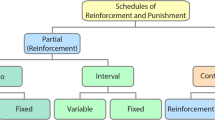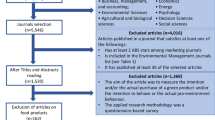Abstract
This paper suggests an application of an averting behaviormethod to reconcile inconsistent public activity with objectiveenvironmental risk. In Korea, an historically polluted watersupply has created citizen resistance to using tap water. Koreansperceive low quality levels for tap water, although objectivelymeasured data show that the pollution levels are lower than theacceptable risk. We hypothesized that the irrational aversion tousing tap water is a consequence of inconsistencies between theobjectively measured and perceived pollution levels. We introducethe perception averting behavior method, in which we add aperception measure unit to the conventional averting behaviormethod. We found that the perception measure provided a validexplanation for citizens' aversion to using tap water in Korea.
Similar content being viewed by others
References
Abdalla, C.W. (1990), ‘Measuring Economic Losses from GroundWater Contamination: An Investigation of Household Avoidance Costs’, Water Resources Bulletin, American Water Resources Association 26, 451–463.
Abdalla, C. W., B. A. Roach and D. J. Epp (1992), ‘Valuing Environmental Quality Changes Using Averting Expenditures: An Application to Groundwater Contamination’, Land Economics 68, 163–169.
Arrow, K. J. (1982), ‘Risk Perception in Psychology and Economics’, Economic Inquiry 20, 1–9.
Bartik, T. J. (1988), ‘Evaluating the Benefits of Non-Marginal Reductions in Pollution Using Information on Defensive Expenditures’, Journal of Environmental Economics and Management 15, 111–127.
Courant, P. N. and R. C. Porter (1981), ‘Averting Expenditure and the Cost of Pollution’, Journal of Environmental Economics and Management 8, 321–329.
Gerking, S. and L. R. Stanley (1986), ‘An Economic Analysis of Air Pollution and Health: The Case of St. Louis’, Review of Economics and Statistics 68(1), 1151–1121.
Grether, D. and C. Plott (1979), ‘Economic Theory of Choice and the Preference Revealed Phenomenon’, American Economic Review 69, 623–638.
Harrington, W., A. J. Krpnick and W. A. Spofford (1989), ‘The Economic Losses of a Waterborne Disease Outbreak’, Journal of Urban Economics 25, 116–137.
Kahneman, D. and A. Tversky (1982), ‘The Psychology of Preferences’, Scientific American 246, 160–173.
Laughland, A. S., W. N. Musser, J.S. Shortle and L. M. Musser (1996), ‘Construct Validity of Averting Cost Measures of Environmental Benefits’, Land Economics 72, 100–112.
Lichtenstein, S., P. Slovic, B. Fischhoff, M. Layman and B. Combs (1978) ‘Judged Frequency of Lethal Events’, Journal of Experimental Psychology 4, 551–578.
Ministry of Environment (1998), Korean Environment White Paper Pusan Waterworks, 1995. Survey about Pusan Running Water Quality.
Slovic, P., B. Fischhoff and S. Lichtenstein (1985), ‘Regulation of Risk: A Psychological Perspective’, in R. Noll, ed., Regulatory Policy and the Social Sciences. Berkeley: University of California Press.
Tversky, A., P. Slovic and D. Kahneman (1990), ‘The Cause of Preference Reversal’, American Economic Review 80, 204–217.
Author information
Authors and Affiliations
Rights and permissions
About this article
Cite this article
Um, MJ., Kwak, SJ. & Kim, TY. Estimating Willingness to Pay for Improved Drinking Water Quality Using Averting Behavior Method with Perception Measure. Environmental and Resource Economics 21, 285–300 (2002). https://doi.org/10.1023/A:1014537330423
Issue Date:
DOI: https://doi.org/10.1023/A:1014537330423




